Clancy Tucker's Blog, page 240
November 20, 2015
21 November 2015 - WYATT EARP
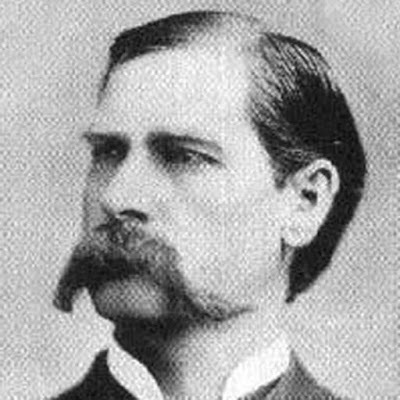
WYATT EARP
G'day folks,
Welcome to the life and times of Wyatt Earp.
Wyatt Earp was a lawman, professional gambler and buffalo hunter, among other occupations, who famously took part in the shootout at the OK Corral in Tombstone, Arizona, on October 26, 1881. Find out more about this Old West icon, from how he met his friend Doc Holliday to what happened to him after the Tombstone gunfight.
After a Midwestern childhood, he headed to California by wagon train as a teen.
Wyatt Berry Stapp Earp was born in Monmouth, Illinois, on March 19, 1848, and named for his father’s commander in the Mexican-American War. Earp’s father had a number of occupations, including farmer, justice of the peace and bootlegger, and Wyatt spent his childhood in both Illinois and Iowa. After the American Civil War broke out in 1861, Earp ran away from the family farm and tried to join the Union army; however, his father found him and brought him home. In 1864, the Earps left Iowa and ventured west by wagon train. Along the way, the travelers had to contend with Indian raids and Wyatt reportedly witnessed his first gunfight. By the end of 1864, the Earps reached San Bernardino, California, where Wyatt labored on his father’s new farm then hauled freight and worked in railroad camps.
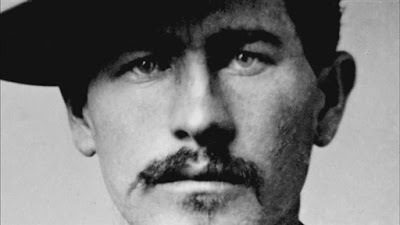
He was a lawman in the “Wickedest Little City in the West.”
By 1870, Earp got his first job in law enforcement, as town constable in Lamar, Missouri, where his family had relocated. He left the job in 1871, having been accused of mishandling public funds. That same year, he was arrested for stealing horses in Indian Territory (present-day Oklahoma), although his case never went to trial. In 1872, Earp was living in Peoria, Illinois, working as an enforcer in a brothel. He went on to spend time as a buffalo hunter before moving to Wichita, Kansas, in 1874. Wichita was a cattle-shipping center and in 1875 Earp got hired as a policeman there. He left the following year, after seriously beating another man during a fistfight, and became an assistant marshal in Dodge City, Kansas, a booming center of the cattle trade; it was dubbed the “Wickedest Little City in the West.” For the next several years, Earp worked as a lawman in Dodge during cattle-trading season, spending the rest of the year as a professional gambler in Texas and New Mexico.
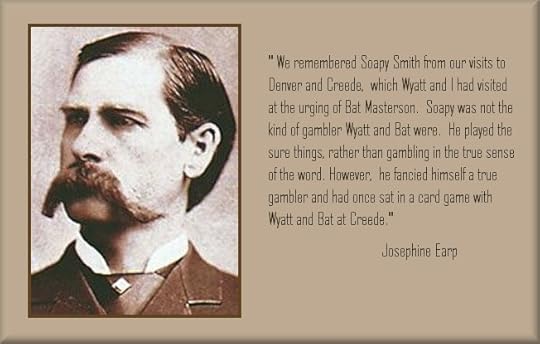
Earp met Doc Holliday on the gambling circuit.
Earp met fellow gambler John Henry “Doc” Holliday in Texas in 1878. Holliday, a Georgia native born in 1851, had studied dentistry in Philadelphia. In 1872, he was diagnosed with tuberculosis and doctors recommended he move to a drier climate. He went to Dallas in 1873 and established a partnership with another dentist; however, Holliday soon turned his attention from fixing teeth to drinking and gambling. Earp and Holliday became friends on the Texas gambling circuit in the late 1870s, and Doc participated in the gunfight at the OK Corral in 1881. Six years later, Holliday died of tuberculosis at age 36 in Glenwood Springs, Colorado.
He was arrested for murder after the gunfight at OK Corral.
Earp arrived in the silver-mining boom town of Tombstone, Arizona, in 1879, and eventually found periodic work as a law officer. The famous gunfight took place on the afternoon of October 26, 1881, in a lot behind the OK Corral, when Earp and his brothers Morgan and Virgil, along with Doc Holliday, confronted cattle-thieving brothers Billy and Ike Clanton and Frank and Tom McLaury. Virgil Earp ordered the cowboys to give up their guns but instead shots were fired, although it’s unclear who pulled the trigger first. The shootout, thought to have lasted less than a minute, left three people dead: Frank and Tom McLaury and Billy Clanton.
Afterward, the Earps and Holliday were arrested for murder. In late November 1881, they were exonerated in court. A month later, gunmen tried to murder Virgil Earp outside a Tombstone saloon; he survived but sustained serious injuries to one arm. Wyatt, who’d been appointed a deputy U.S. marshal, organized a posse to go after the Clanton family. Ike Clanton and another brother surrendered to law enforcement and charges against them in connection with Virgil’s shooting were dropped. In March 1882, gunmen killed Morgan Earp while he was with Wyatt at a Tombstone pool hall. Exacting revenge, Wyatt and his posse murdered several cowboys. The killings tarnished Wyatt’s reputation in Tombstone and he soon fled.
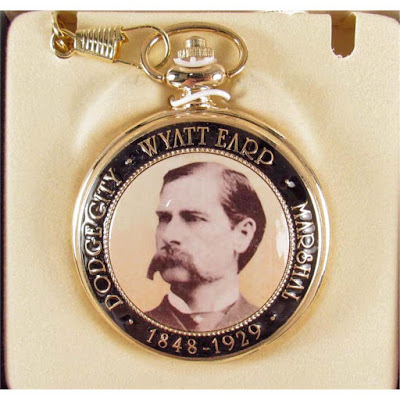
Earp refereed a controversial championship boxing match.
After leaving Tombstone in 1882, Earp moved around the West, laying low and supporting himself through gambling. By the late 1880s, he was living in San Diego with his companion, Josephine Marcus, a New York City-born actress he met in Tombstone. In California, Earp trained racehorses and organized and promoted prizefights. On December 2, 1896, he refereed a heavyweight championship boxing match between Bob Fitzsimmons and Tom Sharkey, before a crowd of some 10,000 spectators in San Francisco. In the eighth round, Fitzsimmons, who’d dominated the fight, appeared to have won after punching Sharkey and knocking him to the ground; however, in a controversial move, Earp ruled the punch was illegal and disqualified Fitzsimmons. Word quickly spread among boxing fans that the match had been fixed, and Fitzsimmons took Sharkey to court; the case was dismissed. Earp maintained his innocence, but the scandal left a scar on his reputation.
Earp was the last surviving participant of the OK Corral shootout.
Earp died at his home in Los Angeles, possibly of chronic cystitis, on January 13, 1929, at age 80. His longtime companion Josephine (she called herself Josephine Earp, although there’s no record they ever were married) had his cremated remains buried at a cemetery in Colma, California. Earp, who had no children, was the last surviving participant of the OK Corral gunfight. In his later years, he’d consulted on Hollywood westerns and gotten to known various actors and directors. His funeral was attended by such celebrities as Western film star Tom Mix, who served as a pallbearer.
After his death, Earp was portrayed by Hollywood as a heroic lawman, thanks in part to a best-selling—but significantly embellished—1931 biography, “Wyatt Earp: Frontier Marshall” by Stuart Lake. The book helped spawn movies and TV series about Earp, starring actors from Henry Fonda to James Garner to Kevin Costner in the lead role.

Clancy's comment: Mm ... Another interesting life, eh?
I'm ...
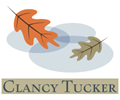

Published on November 20, 2015 03:39
November 19, 2015
20 November 2015 - SARAH PATTON - Guest Writer & Poet

SARAH PATTON
- Guest Writer & Poet -
G'day folks,
Welcome to the life of a writer, mum, screenwriter and poet; not necessarily in that order.
Welcome, Sarah ...
1. TELL US A LITTLE ABOUT YOURSELF AND YOUR WRITING JOURNEY.
My journey begins when I was a child and my mind would be filled with stories. I would day dream so much time away it is a wonder I ever got through school. I wrote poetry in high school and worked on my college newspaper. I was involved in theatre and wrote a play but never had much confidence.
2. WHEN AND HOW DID YOU BECOME A WRITER?
It wasn’t until a few years ago that I became serious about my writing and really sat down to do it. I discovered my thoughts came in the form of dialogue and discovered that is my calling – screenwriter and playwright.
3. WHAT TYPE OF PREPARATION DO YOU DO FOR A MANUSCRIPT? DO YOU PLAN EVERYTHING FIRST OR JUST SHOOT FROM THE HIP?
Usually a story comes to be out of nowhere. I can be inspired by a song, something someone says or a poem. I don’t do much planning except by working out some ideas in my head and then hit the keyboard.

4. WHAT DO YOU ENJOY MOST ABOUT BEING A WRITER?
That I have the potential to make someone else feel something.
5. WHAT IS THE HARDEST THING ABOUT BEING A WRITER?
Making the time to write. Getting my writing out into the world.
6. WHAT WERE YOU IN A PAST LIFE, BEFORE YOU BECAME A WRITER?
I am currently a wife and mother and that comes first. I also have a full time regular job.
7. WHAT IS YOUR GREATEST WRITING ACHIEVEMENT?
Finishing my first script. And really loving it!
8. WHAT ARE YOU WORKING ON AT THE MOMENT?
A short fantasy story.
9. WHAT INSPIRES YOU?
Watching the world around me, when I can, in quiet observation.
10. WHAT GENRE DO YOU WRITE?
Science Fiction and Fantasy
11. DO YOU HAVE ANY TIPS FOR NEW WRITERS?
Write! Write! Write!
12. DO YOU SUFFER FROM WRITER’S BLOCK?
All the time.

13. DO YOU HAVE A PREFERRED WRITING SCHEDULE?
I wish I did.
14. DO YOU HAVE A FAVOURITE WRITING PLACE?
Sitting at my desk next to our sliding doors and they bring in natural light.
15. WHAT IS YOUR GREATEST JOY IN WRITING?
Finishing a project!
16. WHO IS YOUR FAVOURITE AUTHOR AND WHY?
I would say my favorite screenwriters are Mark Gatiss and Steven Moffat.
17. WHAT’S THE GREATEST COMPLIMENT YOU EVER RECEIVED FROM A READER?
That they felt emotional while reading it.
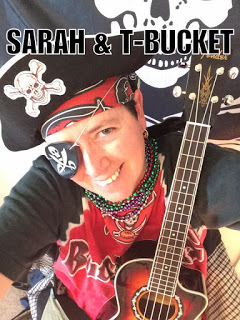
18. WHAT WAS THE WORST COMMENT FROM A READER?
That my writing sounded like someone else’s.
19. WRITERS ARE SOMETIMES INFLUENCED BY THINGS THAT HAPPEN IN THEIR OWN LIVES. ARE YOU?
Sometimes.
20. OTHER THAN WRITING, WHAT ELSE DO YOU LOVE?
Playing the ukulele.
21. DID YOU HAVE YOUR BOOK / BOOKS PROFESSIONALLY EDITED BEFORE PUBLICATION?
Not yet.
22. DESCRIBE YOUR PERFECT DAY.
Silence.

23. IF YOU WERE STUCK ON A DESERT ISLAND WITH ONE PERSON, WHO WOULD IT BE? WHY?
My Dad. He has passed away but we got along the best. If I was stuck with anyone…I would want it to be him.
24. WHAT WOULD YOU SAY IF YOU HAD THE CHANCE TO SPEAK TO WORLD LEADERS?
Try playing monopoly it’s more fun.
25. WHAT ARE YOUR PLANS FOR THE FUTURE?
Have my scripts performed, my poetry published, my graphic novel drawn and my book finished.
26. WHAT FIVE BOOKS WOULD YOU TAKE TO HEAVEN?
None.
27. DO YOU SEE YOURSELF IN ANY OF YOUR CHARACTERS?
Yes, but I try and make them stronger and more confident than I am.
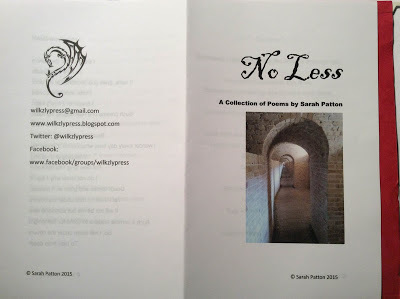
28. DOES THE PUBLISHING INDUSTRY FRUSTRATE YOU?
Yes. It’s clogged.
29. DID YOU EVER THINK OF QUITTING?
Nope.
30. WHAT WAS YOUR FAVOURITE MANUSCRIPT TO WRITE? WHY?
A script. I love the dialogue. That’s the easy part.
31. HOW WOULD YOU DEFINE ‘SUCCESS’ AS A WRITER.
Being published and being able to speak of my success to help others.
32. WHAT SHOULD READERS WALK AWAY FROM YOUR BOOKS KNOWING? HOW SHOULD THEY FEEL?
I want my readers to feel something…anything. Cry, laugh, hate it, love it…anything is better than nothing.

33. HOW MUCH THOUGHT GOES INTO DESIGNING A BOOK COVER?
I think a lot should go into it. Because people do judge books by their cover.
34. WHAT’S YOUR ULTIMATE DREAM?
See my name roll on the credits as “written by.”
35. WRITING IS ONE THING. WHAT ABOUT MARKETING YOU, YOUR BOOKS AND YOUR BRAND? ANY THOUGHTS?
Not really.
36. ARE YOUR BOOKS SELF-PUBLISHED?
They probably will be.
37. DESCRIBE YOURSELF IN FIVE WORDS.
Loyal, persistent, committed, mother, loving
38. WHAT PISSES YOU OFF MOST?
Someone wasting my time.
39. WHAT IS THE TITLE OF THE LAST BOOK YOU READ? GOOD ONE?
Pirate King by Laurie King. Brilliant!
40. WHAT WOULD BE THE VERY LAST SENTENCE YOU’D WRITE?
I waved and she waved back.

41. WHAT WOULD MAKE YOU HAPPIER THAN YOU ARE NOW? CARE TO SHARE?
To see my work in front of a wider audience.
42. ANYTHING YOU’D LIKE TO ADD?
Thanks!

Some of Sarah's poetry via YouTube
My body betrays me
I hide from death
BLOG

Clancy's comment: Thank you, Sarah. I loved your answer to number 22. Keep going.
I'm ....

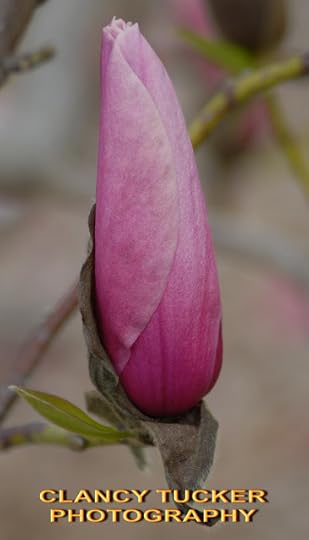
Published on November 19, 2015 02:09
November 18, 2015
19 November 2015 - WHAT IS THE ROSETTA STONE?

WHAT IS THE ROSETTA STONE?
G'day folks,
Ever asked this question? Do you know the answer? This might help for those of you still wondering ...
In the 19th century, the Rosetta Stone helped scholars at long last crack the code of hieroglyphics, the ancient Egyptian writing system. French army engineers who were part of Napoleon Bonaparte’s Egypt campaign discovered the stone slab in 1799 while making repairs to a fort near the town of Rashid (Rosetta). The artifact, which is made of granodiorite, came into the possession of the British after they defeated the French in Egypt in 1801.
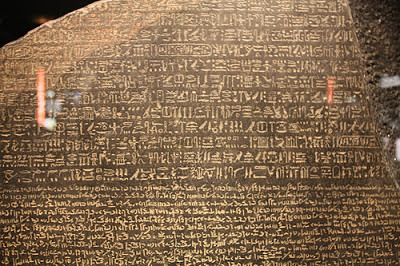
The stone features a decree issued in 196 B.C. by a group of Egyptian clergy and Egypt’s ruler, Ptolemy V, attesting to his generosity and devoutness. It originally was displayed in a temple, possibly near the ancient town of Sais, then centuries later moved to Rosetta and used in the construction of Fort Julien, where it was eventually uncovered by the French. The decree on the stone is written three times, in hieroglyphics, which was used mainly by priests; in ancient Egyptian demotic, used for everyday purposes; and in ancient Greek. The use of hieroglyphics died out after the 4th century and the writing system became an enigma to scholars.
British scientist Thomas Young (1773-1829), who began studying the Rosetta Stone’s texts in 1814, made some initial progress in analyzing its hieroglyphic inscription. Young surmised that the cartouches— hieroglyphs enclosed in ovals—contained the phonetic spellings of royal names, including Ptolemy, who was referenced in the Greek inscription. Ultimately, it was French linguist Jean-Francois Champollion (1790-1832) who deciphered the Rosetta Stone and cracked the hieroglyphic code. Between 1822 and 1824, Champollion showed that hieroglyphics were a combination of phonetic and ideographic signs rather than just symbolic picture writing that didn’t also represent sounds of language, as earlier scholars had suspected. For his discoveries, Champollion is heralded as the founding father of Egyptology.
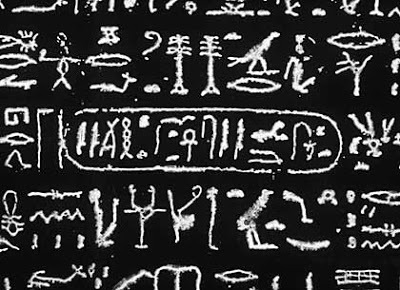
Today, the Rosetta Stone, which measures about 44 inches tall and 30 inches wide, is housed in the British Museum in London, where it’s been since 1802, except for a temporary re-location for safekeeping during World War I to an off-site, underground spot.

Clancy's comment: Amazing, eh?
I'm ...

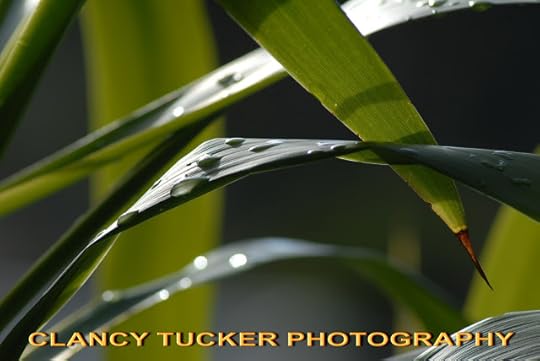
Published on November 18, 2015 03:01
November 17, 2015
18 November 2016 - PICKLES THROUGHOUT HISTORY
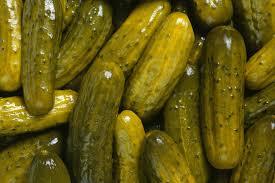 PICKLES THROUGHOUT HISTORY
PICKLES THROUGHOUT HISTORYG'day folks,
Here is an interesting post. It's about pickles. Ever made anything with pickles? I've been a keen pickle, jam, sauce and chutney maker for many years. It's amazing what you can make from virtually anything. My best ever product is 15 fruits chutney. Man, it's to die for ... Just sayin'.
In case you didn’t know, we’re currently in the middle of International Pickle Week. Every year since 1948, in one of the longest-running food promotions in the country, 10 days in May have been earmarked to celebrate the popular snack. But pickles have been around a lot longer than that: Humans have been pickling and preserving food for nearly 5,000 years. In honor of International Pickle Week, we’re looking back at some of the key milestones in pickle history.
c. 2400 B.C.
Pickling—preserving foods in vinegar, brine or a similar solution—is one of the oldest methods of food preservation. Though its exact origins are unknown, archaeologists believe that ancient Mesopotamians pickled food as far back as 2400 B.C., according to the New York Food Museum. Several centuries later, cucumbers native to India were being pickled in the Tigris Valley.
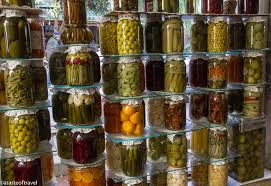
c. 50 B.C.
Queen Cleopatra of Egypt credited the pickles in her diet with contributing to her health and legendary beauty. Meanwhile, Cleopatra’s lover Julius Caesar and other Roman emperors gave pickles to their troops to eat in the belief that they would make them strong.
A.D. 900
Dill, one of the most important herbs used in pickling cucumbers and other vegetables, arrived in Western Europe from its native Sumatra around A.D. 900, although ancient Greeks and Romans used it extensively centuries earlier.
1492
During the Age of Exploration, many sailors on transoceanic voyages suffered from scurvy, a nasty but all-too common disease caused by a deficiency of Vitamin C. On his storied expedition to the New World, Christopher Columbus reportedly rationed pickles to his sailors, even going so far as to grow cucumbers in Haiti to restock for the rest of the trip. And that’s not all: Before he was an explorer, Amerigo Vespucci worked as a ship’s chandler in Seville, Spain—meaning he supplied ships with goods like preserved meat and vegetables. Known as the “Pickle-Dealer,” Vespucci even helped stock Columbus’ ships on his later, less successful voyages across the Atlantic.

1650s
By 1659, Dutch farmers in New York had begun growing cucumbers in the area that is now Brooklyn. Dealers bought the cucumbers, pickled them and sold them out of barrels on the street, beginning what would become the world’s largest pickle industry. Later waves of immigration to New York in the late 19th and early 20th centuries—including large numbers of Eastern European Jews, who introduced kosher dill pickles to America—would cement the city’s place at the center of the pickle world.
1809
Napoleon Bonaparte had offered to pay 12,000 francs (the equivalent of today’s $250,000) to the person who could come up with the best way to pickle and preserve food for his troops. In 1809, French chef and confectioner Nicolas Appert, won the competition with a key insight: if he placed food in a bottle and removed all the air from the bottle before sealing it, he could boil the bottle and preserve its contents. Using glass containers sealed with cork and wax, Appert was able to preserve not only vegetables and fruits but jellies, syrups, soups and dairy products.
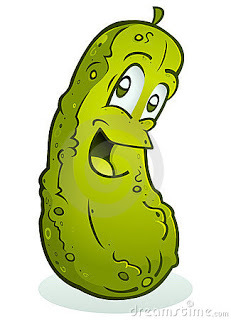
1858
Early in the 1850s, the Scottish chemist James Young invented paraffin wax, which created a better seal in jars used to preserve food. Then in 1858, John Mason of Philadelphia patented the first Mason jar, made from a heavyweight glass that could withstand high temperatures during the canning process. Mason’s patent expired in 1879, but manufacturers of similar jars continued to use the Mason name.
1893
At the 1893 Chicago World’s Fair, “Pickle King” H.J. Heinz dispatched a few local boys to tempt fairgoers with a “free gift” if they visited Heinz’s out-of-the-way booth and tasted his wares. By the end of the fair, Heinz had given out some 1 million “pickle pins,” launching one of the most successful marketing gambits in U.S. history. H.J. Heinz Company, Inc. repeated the pickle pin promotion at the World’s Fairs of 1896, 1898 and 1939. As reported by the Pittsburgh Post-Gazette, Heinz’s dark-green pickle pins continue in production in the 21st century, joined by spin-offs like the ketchup pin and the golden pickle pin.
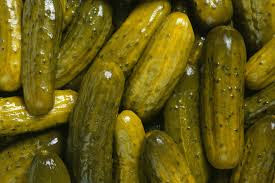
1940s
During World War II, the U.S. government rationed pickles, and 40 percent of the nation’s production of pickles went to the armed forces. In 1948, the trade organization Pickle Packers International, founded in 1893, launched International Pickle Week.
2000
After beating the Dallas Cowboys 41-14 on a day when temperatures reached 109˚ F, players from the Philadelphia Eagles famously credited their endurance to drinking pickle juice. A later study at Brigham Young University, backed these claims up with science, showing that knocking back pickle juice “relieved a cramp 45 percent faster” than drinking no fluids and about 37 percent faster than water, according to a summary of the study published in the New York Times.

Clancy's comment: I hope this post didn't get you into a pickle. Mm ... That sounded a bit dill.
I'm ...

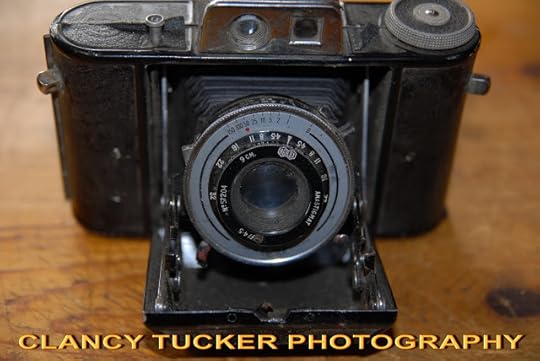
Published on November 17, 2015 01:34
November 16, 2015
17 November 2015 - MICHAEL SALMON - Guest Author and Illustrator
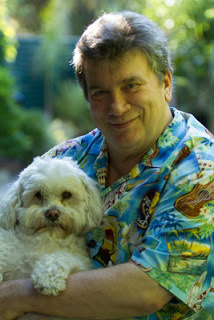
MICHAEL SALMON- Guest Author and Illustrator -
G'day folks,
Welcome to the life of one of Australia's best authors and illustrators. Michael Salmon has been involved in graphics, Children’s literature, TV and Theatre since 1967. He started his career with surfing cartoons and exhibitions of his psychedelic art and then joined the famous marionette troupe ‘The Tintookies’ as a trainee set designer/stage-manager in 1968 (The Australian Elizabethan Theatre Trust, Sydney).
Since then his work has been solely for young people both here in Australia and overseas. His many credits include his ‘Alexander Bunyip show’ (ABC TV 1978-88), pantomimes, fabric and varied merchandise designs, toy and board game invention and the writing and illustrating of 176 picture story-books for young readers. Several million copies of his titles have been sold worldwide. Michael has been visiting Australian Primary Schools for over 40 years.
Welcome Michael ...
1. Tell us five words that best describe you?
Busy, prolific, experienced, humorous, supportive

2. What prompted you to sit down and write your first story?
It was probably a desire to adapt my art (hitherto paintings and poster work) into a book format with a story (of sorts) attached. My first title back in 1972 was a self-published effort: ‘The Monster that ate Canberra’.
A whimsical tale about an oversized bunyip devouring the Capital’s iconic buildings that ‘were’ situated around the foreshores of Lake Burley Griffin. It really was an attempt at some artistic satire; ‘The Monster’ in fact was really The Public Service in disguise. It was all a bit smarty-pants and quite amateurish … but it worked!!
The Monster was a character called ‘Alexander Bunyip’ …. Six years later he had his own show on afternoon ABC-TV, which ran for a decade!
In 2011 the ACT Government commissioned a 500 kilogram brass statue of Alexander as a tribute to his role in helping young people learn to read and also to become aware of our National Capital. Alexander stands outside the new Public Library in the Gungahlin Town Square, ACT. It looks great!
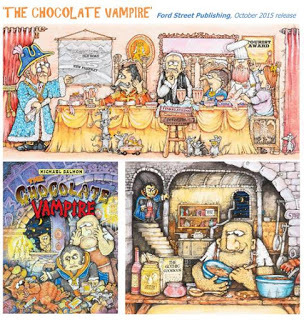
3. Which do you prefer in the creative process? Writing or illustrating?
Prefer the artwork more than writing, but do enjoy ridding my scripts of ambiguity and tautology on second draft look!
4. Are you a plotter or a planster?
Often the start and inspiration for a book is first having a vision of the front cover: its picture and lettering … perhaps with a comedic twist or an obvious, funny hook of some kind.
Something that will prompt a young reader to take note and explore further. I then usually plan out the story in pictures (making story boards) adding words later.
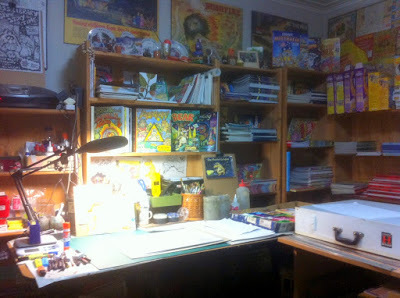
5. What is a typical ‘business’ day for you?
My main business these days is not writing and illustrating books. It’s visiting Schools, talking to children. My sessions are more ‘performances’ … employing ‘show-off’ lightning fast cartoons and stand-up comedy. I take the Students through a little bit of my history and talk about the sources and influences I had in younger years that led me to write and create books. I continue to cartoon on large sheets of paper as I chat to the Students.
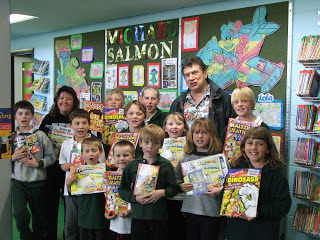
It’s a format that has worked well for over 40 years. I prefer fully-mixed age groups in each session, from Preps/Kinders to Year 6’s. The larger the audience the better. Essentially my talk is about creativity and how to harness it whilst entertaining the Students.
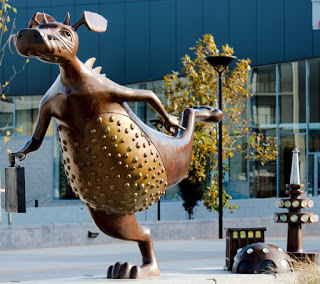
6. If visiting Schools is now your main occupation, are you still writing?
Yes, occasionally. I spent many previous years producing 176 titles, I still love the book process but things change. There have been one or two new titles here and there mixed in with new editions of other titles taken from a large back-list. Its fun redesigning new covers for my ‘old friends’ and sometimes adding a new illustration or two.
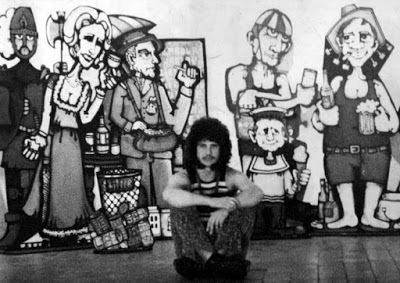
7. You’ve also been involved in other areas of the creative arts here in Australia, what part did they play in your career?
I first started making a living from my art back in 1967 when I held two one-man exhibitions of my psychedelic themed poster-style cartoons and paintings. It was at one of these shows that ‘The Tintookies’ marionette troupe saw the work and offered me a job as a stage manager/trainee set designer in their theatre shows.
(The Tintookies were based at the Australian Elizabethan Theatre Trust, Sydney, as were The Australian Opera, The Australian Ballet & The Elizabethan Theatre Trust Orchestra)
For the next decade I was directly involved in professional children’s theatre, enjoying every minute. I continued to paint and exhibit, sometimes created large, painted human sized cartoony characters as extensions of the pictures hanging on the wall. Also painted several large public murals.
Television was an enjoyable experience, apart from the years of the Bunyip show; I participated in another ABC-TV series, an ensemble production entitled ‘Wayzgoose’ (A bit ‘Monty Python-ish’ for kids, we lasted a season of 13 episodes) Associated originally with the TV show, then on other themes, I designed varied children's merchandise items; including soft toys, misc other toys, crockery, clothing, fabrics/soft furnishing items and invented nine board games (four of which won a ‘toy of the year’ category in 1987)
Back in those days I had a half page Bunyip activity section in The Australian Women’s Weekly and also a full page of activity and children’s correspondence in Family Circle magazine (‘Koala’s Page’)
It was all a very hectic and invaluable ‘apprenticeship’ for what ultimately became my main focus … entertaining children through books, cartooning and chat.
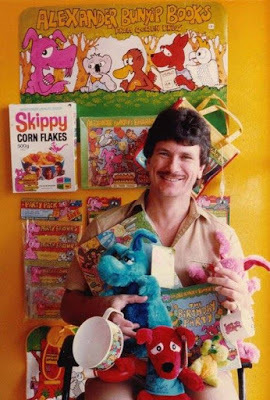
8. You also worked in an honorary capacity with two Australian Foundations for Children, what was that like?
I always thought it important to ‘give something back’ to a community that had supported my commercial work. The first opportunity came when I designed four outside unit/van facades for ‘Life Education’ (Vic) and became the patron for the Berwick and District area.
The second opportunity came soon after the horror of the Port Arthur massacre (1996). Walter Micak had been successful in securing funding from both The Prime Minister and Victorian State Premier, to start an organisation to provide support for children who are the victims of violent crime; ‘The Alannah and Madeline Foundation’ … in memory of his two daughters and wife Nanette. I was asked to contribute and together with Maree Stanley (Vic School Librarian) we created ‘Buddy Bear’: both as a fund raising character and one that children could relate to in a meaningful way. Books, teacher manuals merchandise items and even chocolates followed. The Foundation incorporated an anti-bullying profile. Crown Princess Mary of Denmark is the patron of the Foundation.
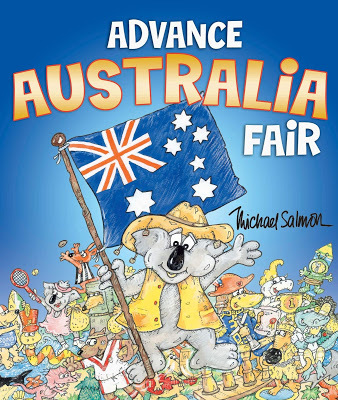
9. What’s next from Michael Salmon?
1. ‘The Chocolate Vampire’ (Ford Street Publishing) New edition of a 1992 title. 2. Towards the end of July 2015 … to the last day of third term I’m either visiting a Primary School or travelling to one. Really looking forward to getting back on the ‘Schools Road!’ … Bendigo, Ballarat, Townsville, Ingham (Qld) Cane-fields Schools cluster, Hobart, Wagga, Cootamundra, Canberra, Penrith-Blue Mountains, Sydney’s eastern and southern suburbs, Hunter Valley, NSW Central Coast, Ipswich (Qld) Writer’s Festival then the Gold Coast in the last week of term.
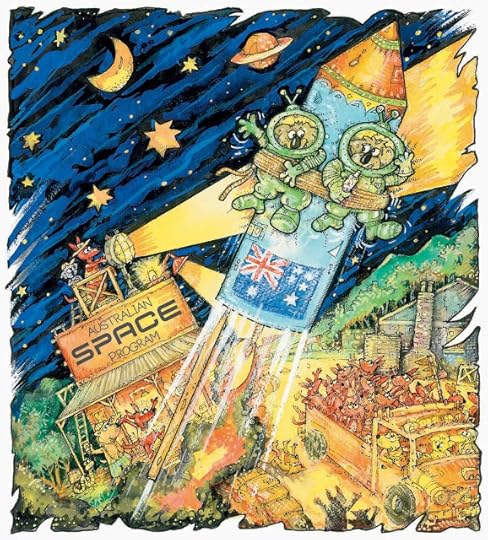
TOP TIP: Create your own private fantasy world: a Middle Earth or a Narnia, where only you may enter. A place where ideas and images grow freely until they’re ready for the outside world.You hold the only key, good luck.

WEBSITE

Clancy's comment: Thank you, Michael. Love your drawings, and admire your work.
I'm ...

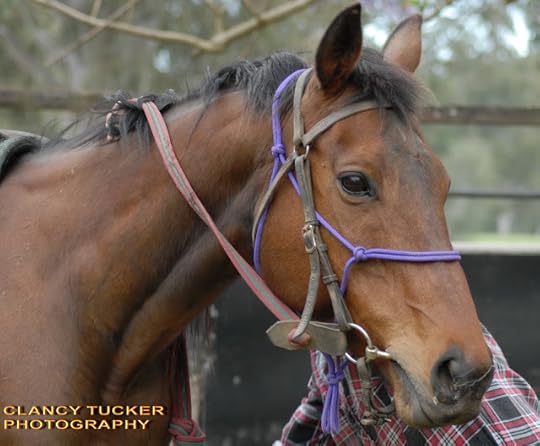
Published on November 16, 2015 02:40
November 15, 2015
16 November 2015 - Dr NICK BARRATT - Guest Academic

Dr. NICK BARRATT
- Guest Academic -
G'day folks,
Welcome to an interview with an English gentleman with an interesting job.
Welcome, Nick ...
1. WHERE DO YOU LIVE? I’m based just outside London near Epsom
2. WHAT IS YOUR CURRENT POSITION? I currently work as the Associate Director, Collections and Engagement, for Senate House Library, part of the School of Advanced Studies within the University of London.
3. TELL US A LITTLE ABOUT YOUR JOURNEY AS A TEACHER. In a word – unplanned. My passion for history came from Prof David Carpenter, who introduced me to the turbulent reign of Henry III. However, I meandered into television where, rather unexpectedly, I gained prominence as a house historian and genealogist before combining the two with local history to focus on personal heritage and public history. Although I’ve published and lectured on a wide range of subjects from the Titanic to the story of London’s suburbs – my latest book, The Forgotten Spy combines 1920s and 30s espionage with a family interest – I’m returning to my medieval roots and will be focusing on the Angevin Kings of England from the mid twelfth to the early thirteenth centuries.

4. WERE YOU A GOOD READER AS A KID? Yes – I devoured books, something my daughters seem to have inherited!
5. WHEN AND HOW DID YOU BECOME A PROFESSOR? I’m not actually a professor, I received my doctorate in medieval English state finance and fiscal history from Kings College London in 1996.
6. WHAT DO YOU ENJOY MOST ABOUT BEING AN ACADEMIC? The ability to ask questions of the past and apply the answers to the present. History is one of the most important and relevant disciplines in the humanities, at a personal, local, national and international level. It is the story of everyone, and presented in the right way can show how we can understand each other’s perspectives and backstory for mutual benefit.
7. WHAT IS THE HARDEST THING ABOUT BEING A PROFESSOR? You never switch off – there’s always something of interest to explore, or another source to check…
8. WHAT WERE YOU IN A PAST LIFE, BEFORE YOU BECAME A PROFESSOR?
Before I joined the University of London, I ran several specialist teams at The National Archives covering medieval, early modern, legal, maps and photographs. Before that, I managed my own historical research company which I founded in 2000. It’s still going strong – Sticks Research Agency – though my team of researchers now run things.
9. WHAT IS YOUR GREATEST ACHIEVEMENT? That’s a very tricky question – obtaining my PhD, writing my first book, starting my own company and seeing it still going strong, 15 years later… Possibly completing 4 London marathons.
10. DO YOU ENJOY WHAT YOU DO? It’s great fun, if challenging – there’s so much work to do, but the potential is enormous and that’s what makes it exciting.
11. WHAT TOPICS DO YOU COVER? At the moment, my role is about managing some wonderful specialists and helping to develop the collections so that others can conduct meaningful research, as well as creating a support framework of inductions and training.

12. DO YOU WRITE ANY PERSONAL WORK? My commercial writing is aimed at a wider public audience, but I’m finally writing more academic articles after a hiatus of a few years.
13. DO YOU HAVE ANY TIPS FOR NEW WRITERS? Write with passion about something you are passionate about. Then ask people to read it, and be prepared to take on board their criticisms. Eventually you’ll find a style or ‘voice’ that suits you, and your audience.
14. DO YOU SUFFER FROM WRITER’S BLOCK? Yes. The hardest part of any project is the first blank page. It’s intimidating. I tend to fill it with structural notes, just to feel as though I’ve got some words in the bank.
15. WHAT IS YOUR GREATEST JOY IN YOUR JOB? Talking to fellow academics about their subjects – I learn something new every day.
16. WHO IS YOUR FAVOURITE AUTHOR AND WHY? The book I’ve read the most times is Bill Bryon’s Short History of Nearly Everything – superbly researched, fascinating subject matter and presented in an engaging style.
17. WHAT’S THE GREATEST COMPLIMENT YOU EVER RECEIVED? I don’t know, I wasn’t listening…
18. HAVE YOU WON ANY PRIZES OR AWARDS? A few bits and pieces over the years.

19. WHAT DID THEY MEAN TO YOU? Obviously it’s always very nice to think that other people appreciate your work; but everyone has an opinion and others may disagree with what I write or how I write it, so as long as I know I’ve done the best I can, I’m happy.
20. OTHER THAN WORK, WHAT ELSE DO YOU LOVE? My family, always first. A very distant second would be football, or running to stay in shape.
21. IF YOU HAD AN OPPORTUNITY TO SPEAK TO THE ENTIRE WORLD, WHAT WOULD YOU SAY? We are all one species and share one planet; make the most of your life to make a difference
22. DESCRIBE YOUR PERFECT DAY. Any day spent relaxing with the family
23. WHAT ARE YOUR PLANS / ASPIRATIONS FOR THE FUTURE? In the short term, to do the best I can for Senate House Library with the aspiration to make London’s leading research hub for the humanities; and write my next book. After that, who knows; I’ve never had a conventional career path so I guess anything is possible – maybe even become a professor one day!
24. WHAT ARE YOUR FAVOURITE FIVE BOOKS?
Non-fiction has to be Bill Bryson, Short History of Nearly Everything; in terms of fiction, then David Mitchell, Cloud Atlas and Brendan DuBois, Resurrection Day
25. ANY GREAT CLAIMS TO FAME? A bit of television air time, a few books published – nothing too dramatic…
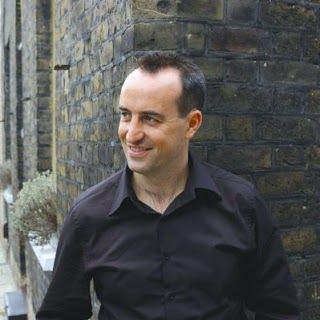
26. WHAT MIGHT BE THE LAST SENTENCE YOU’D WRITE? It would probably be something personal to my family
27. ANYTHING YOU’D LIKE TO ADD? It is incredibly fortunate to be working in an area that is also a passion, and I hope that I communicate some of my enthusiasm in everything that I do.

Clancy's comment: Thank you for sparing the time, Nick. It's great to meet someone who is passionate about their job. I know how you feel. Keep going.
I'm ...

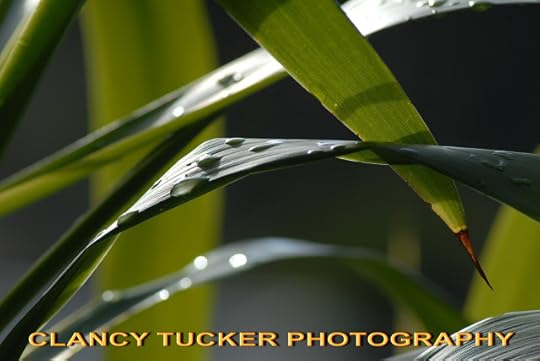
Published on November 15, 2015 03:24
November 14, 2015
15 November 2015 - GREAT QUOTES FROM GREAT AUTHORS
GREAT TIPS FROMGREAT AUTHORS
G'day folks,
Here are some more wise quips from folks who should know.
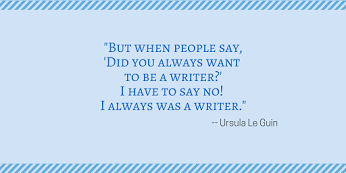
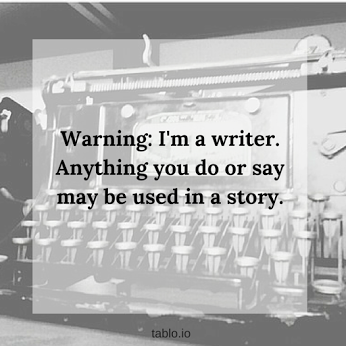





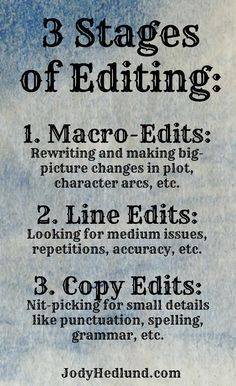
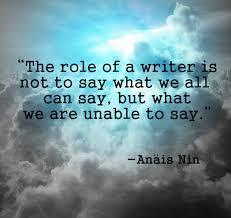
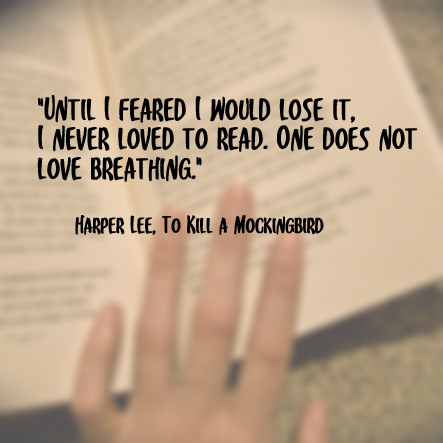

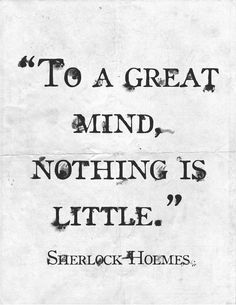
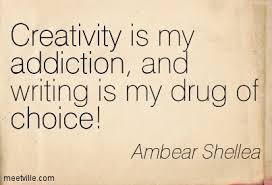
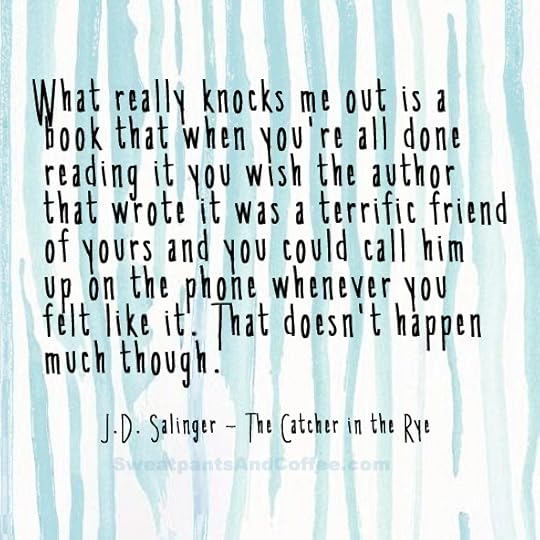


Clancy's comment: I always love Hemingway's quips.
I'm ...

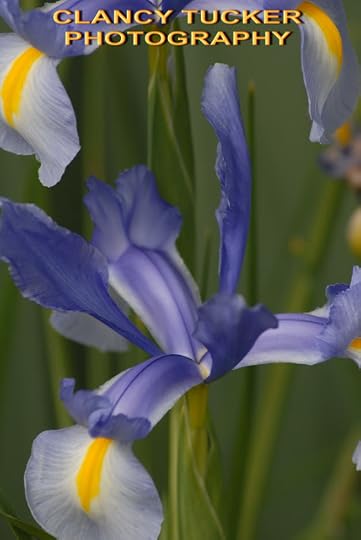
Published on November 14, 2015 03:58
November 13, 2015
14 November 2015 - SECRETS OF STONEHENGE
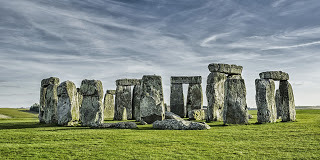
SECRETS OF STONEHENGE
G'day folks,Stonehenge is a prehistoric monument located in Wiltshire, England, about 2 miles west of Amesbury and 8 miles north of Salisbury.
Located on England’s Salisbury Plain, 80 miles southwest of London, Stonehenge, the prehistoric monument featuring the remains of a circle of huge standing stones, has long fascinated archaeologists as well as the general public. Today, the ancient site—whose true purpose remains a mystery—receives more than a million visitors a year. Learn more about Stonehenge, including how it once ended up on the auction block, why summer solstice celebrations were banned there in the late 20th century and what the wizard Merlin and Charles Darwin have to do with it.
Stonehenge was built in phases.
Around 3000 B.C. a circular earthwork was constructed at the site, consisting of a ditch (dug using tools made from antlers) with an inner and outer bank. Inside the bank were 56 pits, which became known as the Aubrey Holes, after antiquarian John Aubrey, who identified them in 1666. Archaeologists estimate Stonehenge was home to 150 or more cremation burials from approximately 3000 B.C. to 2300 B.C., and they’ve called it Britain’s biggest known cemetery of the time.
The two types of stones at the center of the monument, the large sarsens and smaller bluestones, arrived at the site sometime around 2500 B.C. Afterward, they were shaped using various stoneworking techniques and arranged in formations. The final stage of construction was a ring of pits now referred to as the Y holes, dug sometime between 1600 B.C. to 1500 B.C. The Y holes encircled another ring of pits called the Z holes, which were dug at an earlier time and surrounded the sarsens. Researchers are unclear as to whether the Y and Z holes served any purpose. It’s also unknown how long Stonehenge continued to be used after the Y holes were dug.
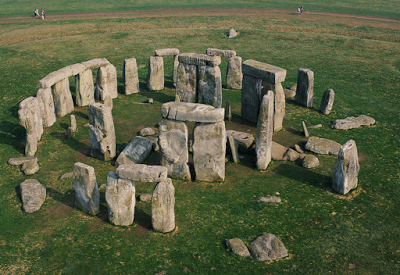
It’s a mystery how some stones got to the site.
Among the remaining riddles about Stonehenge is how its builders, who had only primitive tools, managed to haul all the massive stones to the site. The sarsen stones, which each weigh an average of 25 tons, are thought to have been brought to the site from Marlborough Downs, about 20 miles to the north. The bluestones, which weigh between 2 tons to 5 tons, were transported to Stonehenge from the Preseli Hills area in West Wales, a distance of more than 150 miles. Most archaeologists believe that humans moved the bluestones over water and land to Stonehenge, although it’s also been suggested these stones could’ve been pushed to the site by glaciers.In 2000, a Welsh group called Menter Preseli attempted to use only Stone Age tools and methods to recreate the prehistoric journey made by the bluestones. The project involved dragging a bluestone weighing across land on a large wooden sled then transporting it over water by boat. However, various problems arose along the way, including the theft of the sled (it was soon found but a crane was needed to get the stone back on it). Later, as the stone was being carried in a sling between two long rowboats, it fell into the water and sank (after divers located the stone, it had to be raised by a salvage crew). Eventually, the entire project was scrapped.
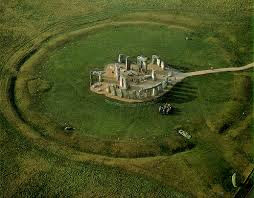
Stonehenge once was put up for auction.
Starting in the Middle Ages and for centuries afterward, Stonehenge was privately owned. By the late 1800s, crowds of visitors had taken a toll on the site. Sir Edmund Antrobus, owner of the land on which Stonehenge is situated, resisted calls from preservationists to sell the property to the British government. In the early 1900s, Antrobus’s son put up a fence around the prehistoric monument and for the first time in its history visitors were charged an admission fee. Meanwhile, the British military began establishing training facilities in the surrounding area, resulting in an influx of soldiers, equipment and, eventually, aircraft, some of which crashed near the site. However, the passage of the Ancient Monuments Consolidation and Amendment Act in 1913 protected Stonehenge from being intentionally demolished. In 1915, after the Antrobus family heir was killed during World War I, Stonehenge went up on the auction block, where local resident Cecil Chubb successfully bid on the site, on a whim, for £6,600. Three years later, Chubb donated Stonehenge to the national government. In recognition of this deed, he was knighted by Prime Minister Lloyd George.
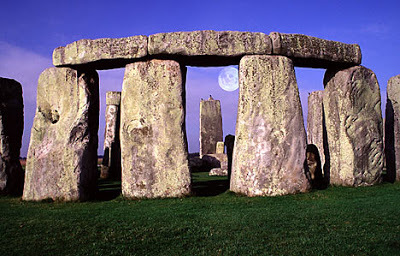
Theories abound about Stonehenge’s purpose.
Stonehenge’s builders left no known written records, so scholars (and non-scholars) have long speculated about why it was constructed. In the early 12th century, Geoffrey of Monmouth, one of the first people to write about the ancient site, claimed it was erected as a memorial to hundreds of Britons who were slayed by the Saxons. According to Geoffrey, the wizard Merlin supposedly directed that the stones for the monument be procured from the Giants’ Ring, a stone circle with magical healing powers said to be located in Ireland. Another theory, suggested by John Aubrey and 18th century archaeologist William Stukeley, is that Stonehenge was built as a Druid temple. Modern scholars say Stonehenge’s construction predated the Druids; however, present-day Druids view it as a sacred spot.
Another theory, introduced in the 1960s, holds that Stonehenge was an astronomical computer used to predict eclipses. And in 2008, archaeologists suggested that Stonehenge was a center for healing, a prehistoric version of Lourdes that attracted the sick and injured. Meanwhile, there’s a contingent of people who believe Stonehenge is a landing pad for ancient space aliens, and British authorities have received reports from the public about UFOs hovering near the famous monument.
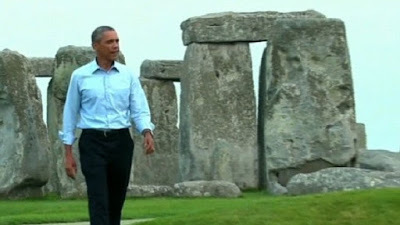
Summer solstice gatherings were banned at Stonehenge.
First held in 1974 during the summer solstice, the Stonehenge Free Festival started as a counter-culture gathering that grew significantly in size over time. After tens of thousands of people showed up for the 1984 festival, authorities, concerned about such issues as open drug use, banned the event for the following year. Nevertheless, on June 1, 1985, a long convoy of vehicles filled with would-be festival goers (who were part of a movement called the New Age Travellers) made its way toward Stonehenge.
About seven miles from the ancient site, police stopped the convoy. Accounts of what happened next vary: Law enforcement officers claimed they were attacked by people in the vehicles, while those in the convoy said the police dragged various individuals, unprovoked, from their vehicles and beat them. The Travellers fled to a nearby beanfield, where they were surrounded by police, and more violence ensued. Two dozen people were hospitalized, and numerous arrests were made. In the aftermath of the so-called Battle of the Beanfield, summer solstice gatherings at Stonehenge were prohibited until 2000.
Darwin studied worms there.
In 1877, naturalist Charles Darwin travelled to Stonehenge to conduct research on a subject that had long fascinated him: earthworms. During his visit, Darwin, who was interested in the impact that worms had on objects in the soil over time, observed how a fallen stone at the ancient monument had sunk deeper into the ground as a result of the activities of the lowly creatures, who continually churn through the soil. Darwin’s research was included in what would be his final book, “The Formation of Vegetable Mould Through the Action of Worms,” published in 1881.
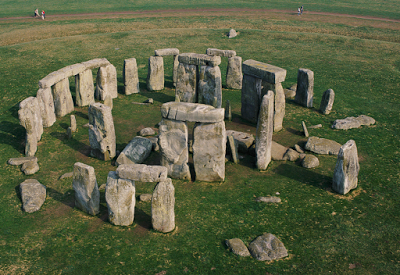
Stonehenge is just one of several prehistoric stone circles in Great Britain.
While Stonehenge has been referred to as the most architecturally sophisticated ancient stone circle, the largest of them is Avebury, located 25 miles north of Stonehenge. Constructed between 2850 B.C. and 2200 B.C., Avebury today consists of a massive circular bank and ditch enclosing 28.5 acres. Inside the ditch is an inner stone circle that encloses two smaller stone circles. During the Medieval era, a number of the stones were knocked over and buried by local Christians who believed they were pagan symbols. Later, some of the stones were broken up and used as building materials. In the 1930s, archaeologist Alexander Keiller, heir to a British marmalade fortune, purchased the site. Keiller cleared away old cottages and farm buildings and re-erected many of the stones. As with Stonehenge, it’s uncertain for what exact purpose Avebury was used by ancient people.

Clancy's comment: I've been to this interesting place and found it quite spooky. I sat and looked, thinking and wondering how it was developed, by who and when.
I'm ...


Published on November 13, 2015 03:22
November 12, 2015
13 November 2015 - ROSALIE EDGE - ENVIRONMENTAL PIONEER
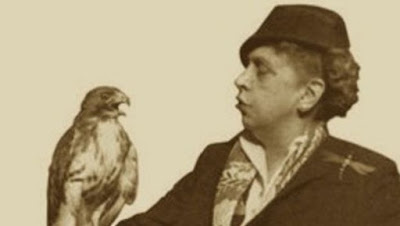
ROSALIE EDGE- ENVIRONMENTAL PIONEER -
G'day folks,
Here is some background on an environmental pioneer. Socialite, suffragette and fearless environmental activist Rosalie Edge was born in 1877 and made it her mission to protect the animals and our environment.
Rosalie Edge,who was born into New York City's mannered upper echelons in 1877, knew how to make waves to get the results she wanted. After first joining the fight for women's suffrage (which was achieved in the U.S. in 1920), she turned her attentions to the environment while in her 50s. Her two best-known feats are: 1) creating a protected environment for hawks and other raptors at Hawk Mountain Sanctuary,and 2) forcing the National Association of Audubon Societies to stop putting hunting interests ahead of animal protection. However, Edge didn't stop there — she gave her all in many environmental battles, including the following:
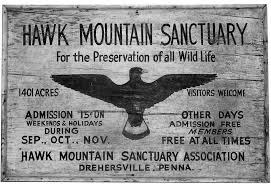
Stolen documents? No problem!
In 1931, Edge's Emergency Conservation Committee produced a four-page pamphlet, "Last of the White Pelican," to draw attention to the fact that pelican numbers were dropping at refuges nationwide. After this pamphlet came out, an anonymous source sent Edge documentation — which had been appropriated without permission — about a policy of destruction for pelicans in Yellowstone National Park.
Starting in 1923, employees of the U.S. Fish Commission and National Park Service had been clubbing pelicans and destroying their eggs on the park's Molly Island. An internal report also revealed the hope that getting rid of pelican eggs would force the birds to switch breeding grounds. (Why the attack on pelicans? Basically, to help fishermen who didn't like competition for the trout they wanted to catch themselves.)
In September 1932, "Slaughter of Yellowstone Pelicans" revealed this pelican destruction policy. Some protection measures had already been underway before this pamphlet was released, but after it came out Washington ordered the park to fully protect its pelicans. Given this result, Edge had zero qualms about using pilfered material. As she told The New Yorker in 1948, "Yes, the letters were purloined, but the end justified the means. Needs must when the devil drives!"
Unimpressed by government policy
The U.S. Biological Survey had an ongoing animal control program that was dubbed the Division of Predatory Animal and Rodent Control in 1924. As the name suggests, the goal was to control (i.e. reduce) populations of animals that included wolves, mountain lions, coyotes, grizzly bears and prairie dogs. Most farmers and ranchers were happy to have these the animals gone from their lands, but Edge felt differently — after all, she'd once noted, "Creatures of the wild belong to themselves alone. . .Man should disturb them as little as possible."
Given her sentiments, it's little surprise Edge spoke out against the Survey's practices; one pamphlet she issued had the expressive title of: "The United States Bureau of Destruction and Extermination: The Misnamed and Perverted Biological Survey" (1934). When the Survey was dismantled in 1939, it must have been a good moment for Edge.
Unfortunately, this dismantling didn't mean that wild animals were protected — many official eradication policies continued. It wasn't until the 1960s and '70s that animal control measures would finally be changed.
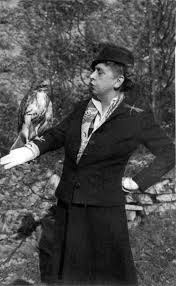
Farsighted about environmental toxins
Just as her worries about wild animals were ahead of their time, Edge was also prescient when it came to seeing the problems that poisons and pesticides could pose to the environment.
One technique the U.S. Biological Survey turned to in its animal control campaigns was mass poisoning (with poisons like thallium and strychnine), which worried Edge. She expressed additional concerns about using insecticides to rid livestock of ticks, fearing the practice could place deer and other animals at risk.
In the biography Rosalie Edge: Hawk of Mercy (2009), author Dyana Z. Furmansky also notes that Edge tried to alert officials about the deadly effects of the insecticide DDT. Edge spoke out more than a decade before Rachel Carson's Silent Spring (1962) — a book that woke the nation to DDT's dangers and changed the environmental movement — was published.
Unfortunately, though history would prove her right, Edge's warnings about environmental toxins were usually dismissed. In the 1930s, the Wildlife Division's Washington office even created a parody Edge pamphlet to show how unreasonable they felt she was being. Their (entirely capitalized) mockery contained the line: "WE ARE OPPOSED TO THE USE OF POISONS FOR ANY PURPOSE. LET THE COCKROACH LIVE."
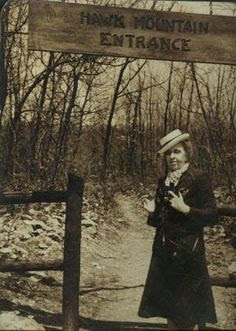
Fought for trees too
In addition to protecting animals, Edge was happy to take on government and commercial interests to preserve forests and trees. For example, when she learned that a grove of sugar pines on Forest Service land near Yosemite National Park was going to be logged, ECC pamphlets and lobbying by Edge got the Senate to introduce a bill to protect the trees.
Edge also took part in a five-year battle against lumber companies, politicians and the Forest Service in order to preserve old-growth forests around Olympic National Monument. Local support for the project grew, and a bill for the new and expanded Olympic National Park was passed in 1938. Edge was delighted by the achievement, boasting in her 1948 New Yorker profile, "Oh, what a glorious old battle that was! And didn't we show up the lumber interests? Oh no!"
Yet Edge knew to stay vigilant after victory. In 1947, when the Interior Department okayed bills that would cut forested areas out of Olympic Park, an Edge pamphlet quickly came out: "The Raid on the Nation's Olympic Forests." Numerous letters subsequently poured into the department, and the idea was dropped.
Changed public perception
In Edge's day, wild animals were often viewed as either useless pests or dangerous threats. Some farmers thought snakes could steal milk from their cows. Shooting as many hawks as possible was seen as a nice way to spend an afternoon. And stories about eagles flying away with children regularly appeared in newspapers.
Fortunately, Edge was savvy enough to realize that changing public opinion was just as important as new environmental regulations and laws. She wrote a pamphlet to debunk the tales of eagles abducting children, and Hawk Mountain Sanctuary introduced people to the wonder and enjoyment that could come from viewing birds instead of shooting them.
Edge also embraced opportunities for good publicity. In 1946, she rescued and relocated three peregrine hawk chicks that were nesting outside Olivia de Havilland's New York City penthouse. (Sadly, according to biographer Dyana Z. Furmansky, these hawks were all dead in just a few years: two were shot and one got electrocuted by a power line.)
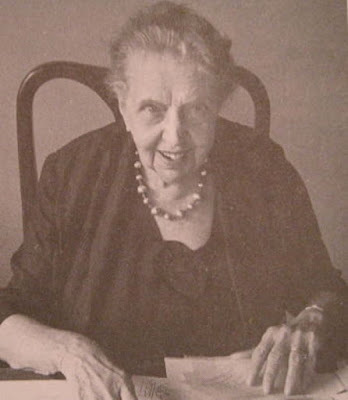
Part of a growing movement
Edge remained committed to environmental causes as she grew older. In the 1950s, she joined other groups — such as the Sierra Cluband the Wilderness Society— in a fight against a proposed dam for Dinosaur National Monument's Echo Park. The project was eventually defeated.
For Edge, the participation of so many environmentalists was another triumph. At one point, she declared: "I am amazed at the aroused spirit of conservationists and their greatly increased numbers. Something should be done to unify the thousands who constitute a seething mass opposed to the Echo Park dam."
Edge passed away in 1962. Today, activists who continue to agitate and fight for animals and the environment likely continue to have her full approval.

Clancy's comment: A passionate woman. Nothing wrong with that.
I'm ...
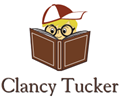
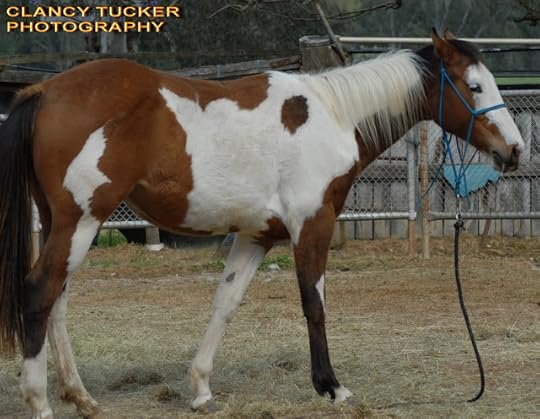
Published on November 12, 2015 03:39
November 11, 2015
12 November 2015 - KILER DAVENPORT - Bureau Chief and Host @ Alternative Public Radio International
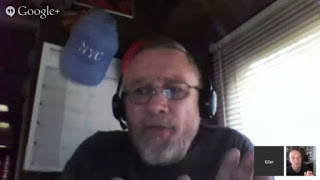
KILER DAVENPORT
- Bureau Chief and Host @ Alternative Public Radio International -
G'day folks,
From time to time I come across a very interesting character to feature on my blog. Well, today is no exception.
Welcome, Kiler ...
#1: TELL US A BIT ABOUT YOUR WRITING - BROADCASTING JOURNEY.
KD: BOTH MY WRITING AND BROADCASTING COME FROM MY IN DEPTH EXPERIENCE WITH DEATH AND DYING; WORKING IN FORENSIC SCIENCE; EMT / PARAMEDIC; SEARCH AND RESCUE HAS GIVEN ME A BROAD SENSE OF REALITY AND A VAST SENSE OF AWARENESS OF HUMANITY WITH ITS MANY STRUGGLES, PAINS, SORROWS, NEEDS AND WANTS.
#2: WERE YOU A GOOD READER AS A KID?
KD: I DIDN’T ENJOY READING AS A CHILD. I HAVE MORE OF AN AUDIO / KINESTHETIC SENSE OF AWARENESS.
#3: WHEN AND HOW DID YOU BECOME A JOURNALIST?
KD: I’VE NEVER CONSIDERED MYSELF TO BE A JOURNALIST. AS I SAID BEFORE I HAVE A KEEN SENSE OF AWARENESS AND CURIOSITY. I BEG TO FIND THE STORY BENEATH THE SURFACE. I LONG TO HAVE A MORE FULL AWARENESS OF WHAT IS GOING ON AROUND ME AND WITHIN OTHERS. IF YOU WANT TO CALL THIS A JOURNALIST SO BE IT.
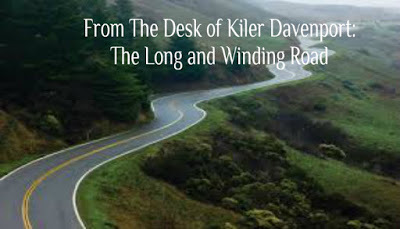
#4: WHAT DO YOU ENJOY MOST ABOUT BEING A JOURNALIST?
KD: I ENJOY TAKING A REALLY GOOD STORY AND SPINNING IT UP TO MY PERCEPTION, AWARENESS AND TALENT.
#5: WHAT IS THE HARDEST THING ABOUT BEING A WRITER?
KD: TRYING TO BLEND IN WITH ALL THE OTHER WANNABE WRITERS IN THE WORLD TODAY. BEING ABLE TO STAND OUT AMONG THE CROWD. BEING ABLE TO SELL YOURSELF AND YOUR PRODUCT IN THIS OVERCROWDED MARKET PLACE.
#6: WHAT WERE YOU IN A PAST LIFE, BEFORE YOU BECAME A BROADCASTER?
KD: I DO NOT BELIEVE IN PAST LIVES OR REINCARNATION. I AM AN ATHEIST AND HARD CORE REALIST. IF I CANNOT SEE IT, TOUCH IT, SMELL IT, FEEL IT OR HEAR IT I AM VERY SKEPTICAL.
#7: WHAT IS YOUR GREATEST WRITING ACHIEVEMENT?
KD: EVERY PIECE THAT I WRITE IS AN AMAZING ACHIEVEMENT. MY PLEASURE IS IN THE CONTINUOUS JOURNEY OF WRITING AND NOT LOOKING FOR SOME GLORIFIED AND HYPED UP DESTINATION.
#8: WHERE ARE YOU WORKING AT THE MOMENT?
KD: ON PLANET EARTH. AT LEAST THAT’S WHAT WE HAVE COME TO CALL THIS ROCKY ORB.
#9: WHAT’S YOUR CURRENT POSITION?
KD: STANDING UP RIGHT.
#10: DO YOU ENJOY WRITING FOR A NETWORK?
KD: ONE MUST FIRST DEFINE A NETWORK AND THEN ONE MUST DEFINE WRITING. BUT YES I ENJOY WRITING.
#11: WHAT TOPICS DO YOU COVER?
KD: THEY RUN THE GAMUT FROM HUMAN RELATIONS TO QUANTUM PHYSICS. I DABBLE IN CONVERSATION CONCERNING THE NEW WORLD ORDER, CHEMTRAILS, ADVANCED WEAPONRY, INTERNATIONAL RELATIONS, NEUROLOGY, RFID CHIPS AND I AM VERY FOND OF SOCIOLOGY AS I AM GETTING MY DEGREE AND WITH THAT AND A DIME WE MAY ALL BE ABLE TO GET A CUP OF COFFEE.
#12: OTHER THAN WRITING FOR THE PRESS, DO YOU WRITE ANY PERSONAL WORK?
KD: I WRITE TO WRITE. I DO NOT LOOK FOR MARKETS OR SPECIFIC CAUSES. I LET THE MARKETS COME TO ME. I CREATE MY OWN MARKET AND CONCENTRATE ON WRITING FOR WRITINGS SAKE.
#13: DO YOU HAVE ANY TIPS FOR NEW WRITERS?
KD: IF YOU GOT IT THEN YOU GOT IT. IF YOU DON’T THEN YOU DON’T.
#14: DO YOU SUFFER FROM WRITER’S BLOCK?
KD: NEVER. NEVER ONCE IN MY TIME OF WRITING HAVE I EVER DONE A REWRITE.
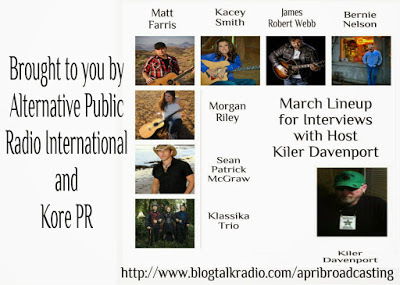
#15: DO YOU HAVE A PREFERRED WRITING SCHEDULE?
KD: NO I WRITE WHEN THE MOOD STRIKES ME OR I AM MOVED BY AN INTERNAL OR EXTERNAL EVENT. WRITING IS A MANIFESTATION OF THOUGHT BASED ON EXPERIENCE, PERCEPTION, TALENT, ABILITY AND CAPACITY.
#16: HAVE YOU EVER GOOFED WHILST ON AIR?
KD: MANY TIMES AND THEN IS WHAT MAKES LIVE RADIO EXCITING, RAW, POWERFUL AND EXPLOSIVE. PEOPLE ARE DRAWN TO GOOF UPS WHILE LIVE ON AIR. JUST LIKE PEOPLE ARE DRAWN TO TELEVISION BLOOPERS. I NEVER RUN WITH A SCRIPT.
#17: DO YOU HAVE A FAVORITE WRITING PLACE?
KD: COLD, RAINY, FALL DAY.
#18: WHAT IS THE GREATEST JOY IN YOUR JOB?
KD: I DO NOT HAVE A JOB. I HAVE LIFE, LIBERTY AND THE PURSUIT OF HAPPINESS. I REFUSE TO BE ENSLAVED BY THE SYSTEM. I REFUSE TO BOW TO THIS MACHINE WE CALL GOVERNMENTS, OVER LORDS, SLAVE MASTERS, THE RULING CLASS. I AM WHO I AM.
#19: WHO IS YOUR FAVORITE AUTHOR AND WHY?
KD: KARL MARX. HIS IDEAS WERE POWERFUL. HIS PERSONALITY EVER CHANGING. HIS DOGMA ROOTED IN A TIME OF EXPONENTIAL CHANGE IN CULTURE. HIS TENACITY UNPARALLELED TO GET A POINT ACROSS AND MAKE IT STICK.
#20: WHAT’S THE GREATEST COMPLIMENT THAT YOU HAVE EVER RECEIVED FROM A READER / LISTENER?
KD: I HAVE BEEN CALLED THE “RENAISSANCE MAN”. I BELIEVE IN FREE SPEECH TO A FAULT AND IT HAS BEEN SAID THAT I SAY THE THINGS THAT MOST WOULD NOT DARE TO SAY LET ALONE THINK.
#21: WHAT’S THE WORST COMMENT FROM A READER / LISTENER?
KD: THAT I AM AN ASSHOLE AND SHOULD BE HUNG BY THE NAPE OF THE NECK UNTIL DEAD BECAUSE OF MY OUTSPOKENNESS AND MY INABILITY TO BE POLITICALLY CORRECT.
#22: WRITERS ARE SOMETIMES INFLUENCED BY THINGS THAT HAPPEN IN THEIR OWN LIVES, ARE YOU?
KD: MY IMMERSION IN DEATH AND DYING AT A VERY YOUNG AGE HAS INFLUENCED MY WRITING, TEACHING, SPEAKING, LECTURING ABILITIES. WORKING IN EMERGENCY MEDICINE AND SEEING SO MUCH TRAUMA, PAIN AND SUFFERING HAS GIVEN ME GREAT INSIGHT AND WISDOM WHEN PUTTING PEN TO PAPER.
#23: HAVE YOU WON ANY PRIZES OR AWARDS?
KD: YES BUT NONE I WANT TO SPEAK OF HERE.
#24: WHAT DID THEY MEAN TO YOU?
KD: WHAT DO THEY MEAN TO ANYONE?
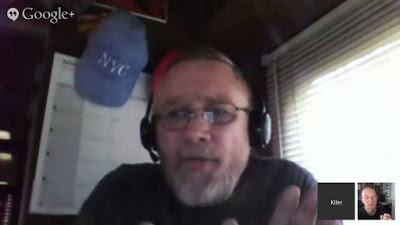
#25: OTHER THAN WRITING, WHAT ELSE DO YOU LOVE?
KD: PRODUCING AND DIRECTING COMMUNITY TELEVISION.
#26: IF YOU HAD AN OPPORTUNITY TO SPEAK TO THE ENTIRE WORLD, WHAT WOULD YOU SAY?
KD: IF YOU SEE AN EXPERT ON THE ROAD - KILL HIM.
#27: DESCRIBE YOUR PERFECT DAY.
KD: BREATHING.
#28: WHAT YOU ARE YOUR PLANS / ASPIRATIONS FOR THE FUTURE?
KD: THE FUTURE DOES NOT EXIST. THE PAST A DELUSION. ALL WE HAVE IS THIS MOMENT AND EVEN THAT IS AN IMPOSSIBILITY TO CAPTURE, GRASP AND UNDERSTAND.
#29: WHAT FIVE BOOKS WOULD YOU TAKE TO HEAVEN?
KD: SINCE HEAVEN DOES NOT EXIST. I WOULD NOT BE TAKING ANY WITH ME.
#30: ANY GREAT CLAIMS TO FAME?
KD: I AM JUST HAPPY TO BE ALIVE AT THIS TIME, DURING THIS TIME WITHIN THIS SPACE. IT IS MAGICAL. IT IS A MYSTERY. I STAND IN AWE OF EXISTENCE. I AM OVERWHELMED BY CONSCIOUSNESS AND OUR INABILITY TO GRASP EVEN THE MOST BASIC PART OF IT.
#31: ANYTHING YOU’D LIKE TO ADD.
KD: BE OF GOOD CHEER. ACCENTUATE THE MARVELS OF REALITY. LIVE IN THE MOMENT. CAPTURE THE ESSENCE OF THIS PHENOMENAL THING WE CALL LIFE. TELL THE TRUTH TO A FAULT. BE YOURSELF AND NEVER BOW TO ANYONE OR ANYTHING. RESPECT AND BE RESPECTED.
VIDEO OF KILER IN ACTION

BIO FOR KILER DAVENPORT
I am a man of many words and endless ideas, dreams, concepts, philosophies, perceptions and experiences. Growing up in the funeral home working in the embalming room, picking up dead bodies and sleeping above the embalming room and sleeping above the embalming room at 14 years old was a trip. I was riding ambulances and fire trucks at 15 and doing other things on the emergency squad that would tax the the nerves of the most experienced paramedics.
I have carried so many dead babies to my embalming table and dressed up so many little aborted fetuses. Yes, it is a crazy world and one that I love.
I have worked undercover for one of the largest news organizations in the world and have been behind the dark wall of the new world order and it has given me so much experience into international affairs, human relations and an overall sense of how this matrix works.
I will live the remaining days on the air doing live radio and relating to my experiences to the world at large in hopes that my message will touch people in a powerful way and allow them to experience possibilities and potential for personal development and empowerment.
ALL ABOUT ALTERNATIVE PUBLIC RADIO INTERNATIONAL
Alternative Public Radio is alive and well. After hundreds of hours of non-stop, full throttle, creative engineering we have hit the pavement running. I wish I could say that this was a collaborative effort that people were breaking down the studio door to help. Sadly that is not the case. I would like to thank the ones who were there for us during all of these trials and tribulations.
Alternative Public Radio International has been long in coming but worth the effort and hours. Our diverse and creative programming is straight from the gut and brought to you by folks who have dedicated their lives in the quest for the return of liberty and freedom to this land. They all spend their hours in the studio researching, planning, developing, casting for talent, creating, networking and coordinating for your benefit.
We built this massive network for the future more than the present. We feel like it will better understood one hundred years from now because people in that time will be able to look back and see just how many did not heed our warnings. They will be able to know that we cared for the people and tried to educate them of the coming disasters and suffering that we as a nation brought on ourselves.
Our team will continue to put our lives at risk and work deep within the shadows to bring about change so that our children will not have to suffer so much.
Our missions are many. We live in constant danger of being imprisoned or even killed for daring to reveal the secrets of this new world order.
We encourage all of you to take off your blinders and empower yourself, your friends, your family and co-workers to face reality and become a warrior in the fight.
CONNECTIONS FOR KILER DAVENPORT AND ALTERNATIVE PUBLIC RADIO INTERNATIONAL
LINKED IN -- https://www.linkedin.com/in/kdlive2015
BLOG TALK RADIO -- http://www.blogtalkradio.com/apribroadcasting
BLOGGER -- http://www.destiniepublishing.blogspot.com &http://www.apripresentsmem.blogspot.com
QUORA -- https://www.quora.com/Kiler-Davenport
GOOGLE PLUS -- https://plus.google.com/100011360896072179498/posts
ALTERNATIVE PUBLIC RADIOINTERNATIONAL WEBSITE -- http://www.apribroadcasting.org
KILER DAVENPORT TWITTER -- https://twitter.com/dkiler2010
KILER DAVENPORT ON MIXCLOUD -- https://www.mixcloud.com/kilerdavenport/
KILER DAVENPORT ON AUDIOBOOM -- https://audioboom.com/dkiler2010
KILER DAVENPORT ON INSTAGRAM -- https://instagram.com/kilerd2010
KILER DAVENPORT ON SCRIBD -- https://www.scribd.com/kilerd
APRI ON PINTEREST -- https://www.pinterest.com/apri2014/KILER DAVENPORT ON HOO.DO -- http://www.kilerdavenport.hoo.do
KILER DAVENPORT ON TUMBLR -- http://www.davenportlive2014.tumblr.com
INTERVIEWS WITH KILER DAVENPORT -- http://www.aprigc2015.blogspot.com
KILER DAVENPORT ON FACEBOOK -- http://www.facebook.com/kiler.davenport
ALL ABOUT ALTERNATIVE PUBLIC RADIO INTERNATIONAL ON SCRIBD -- https://www.scribd.com/doc/265346291/Untitled?secret_password=67K1I5gpptFEygbuQfZh
APRI ON YOUTUBE -- https://www.youtube.com/channel/UCN1Yg1gQ_bnMQUWlEA2Jcbg
APRI PRESENTS MODERN EVOLUTION OF MINDS ARTS GALLERY - http://www.queeniva89.wix.com/memartgallery
KILER DAVENPORT ON REBELMOUSE -- http://www.rebelmouse.com/kilerd2014

Clancy's comment: Thanks, Kiler. Well, folks, I did tell you he was an interesting character. Keep broadcasting, Kiler. I hope you enjoy many more perfect days - breathing.
I'm ...


Published on November 11, 2015 01:08



